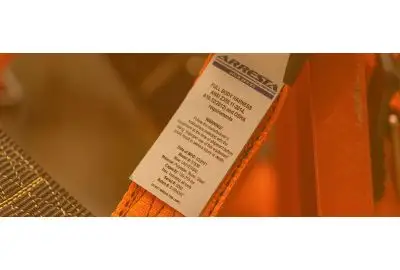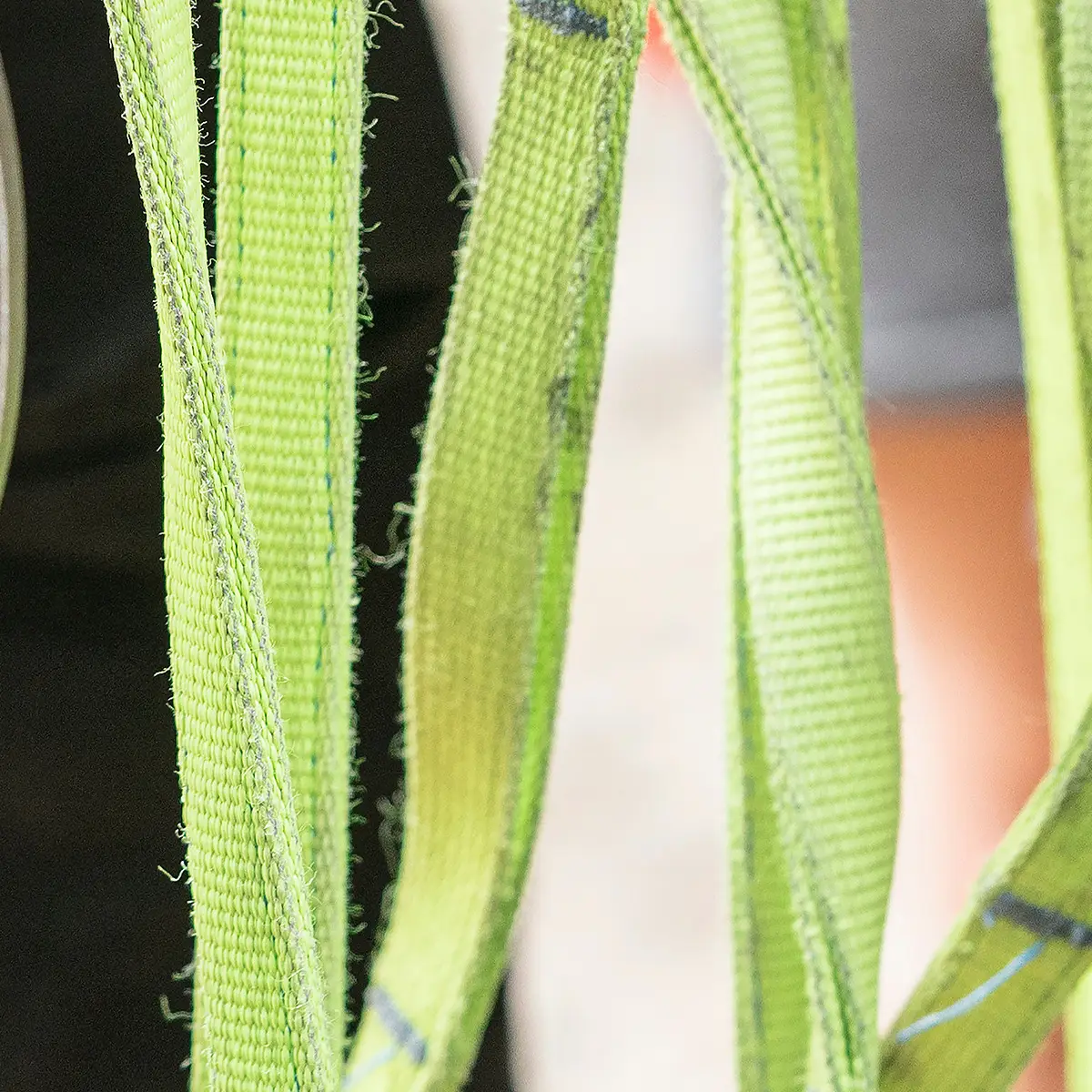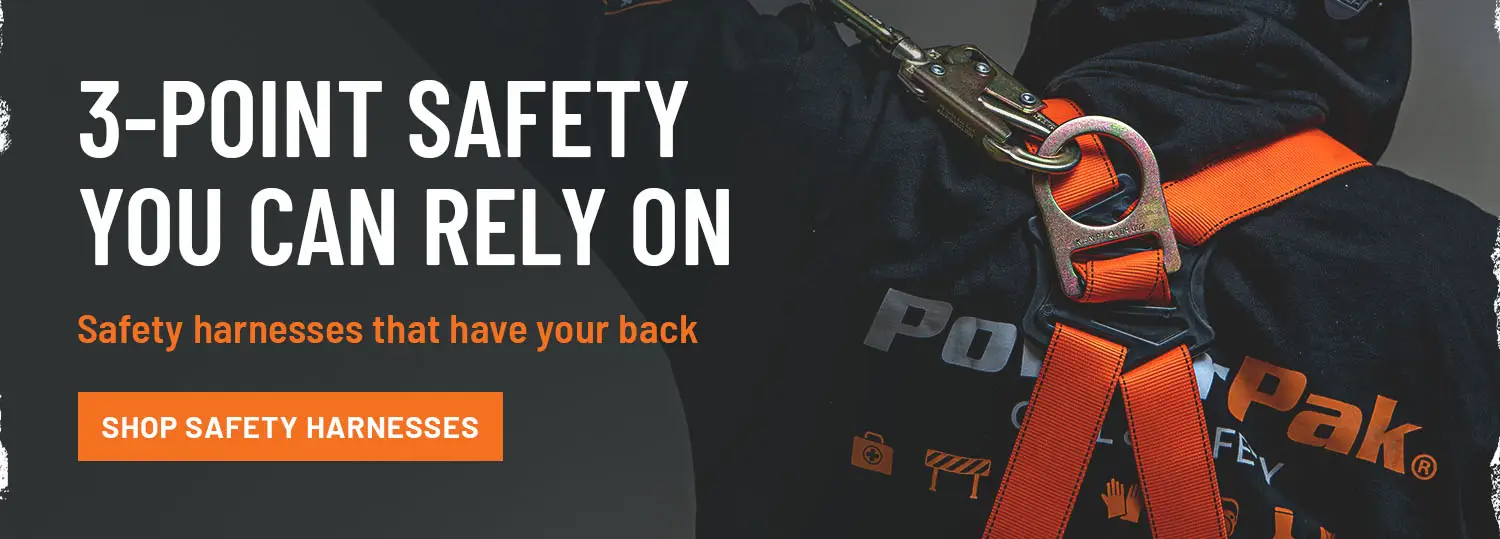What You Need to Know About Safety Harnesses Expiring

Construction can be a dangerous business. A quick look at OSHA’s fatalities data shows us just how dangerous. That's why safety is such a big deal when it comes to training workers and complying with OSHA requirements in this industry.
In addition to training, construction companies are also required to provide workers with specialized equipment, such as hard hats, work gloves, and harnesses, to meet safety standards. It's all part of keeping your crew safe from injury or death.
Keeping Track of Safety Equipment
Maintaining all safety mandates, providing relevant training, and issuing employees the appropriate personal protection equipment (PPE) can be complicated. In addition, safety equipment must be regularly inspected and replaced when outdated or damaged to ensure it’s in proper working order.
Many workers know their hard hats have an expiration date of five years, and because of that, they assume their other safety gear also expires in a certain amount of time. So people often ask, "When does my safety harness expire?"
The Problem With a Mandated Expiration Date
Giving contractors a pre-determined amount of time in which safety equipment remains reliable can be misleading — and dangerous. This method disregards the many variables that affect the performance of your safety equipment.
For example, a harness’s lifespan varies based on many factors, some of which include the following:
- Frequency of use (daily vs. weekly or monthly)
- Damage that occurs to the harness while in use
- The type of environments and climate you work in
- The materials used for the harness
Let’s run through a scenario that demonstrates why an expiration date on safety harnesses is a bad idea. Imagine harnesses have a five-year expiration date, and yours becomes snagged or damaged after using it for only six months. In this imaginary scenario, you might believe you still have over four years of use left. This is a false sense of security since the integrity has been compromised. For safety, the harness should be decommissioned and destroyed immediately.
On the other hand, a supervisor who uses their harness once a month for an hour may never need to replace it. Mandated expiration dates are unsafe because they fail to assess the equipment’s real-world condition. Regular inspections are the only way to decide whether your safety harness is truly safe to use.


When Does My Safety Harness Expire?
The short answer is never. As long as the safety harness is in good working condition, you can continue to use it. But determining "good working conditions" can be a little subjective. Since the rules for contractors and construction workers regarding fall harness expiration are a little blurry, let's clear up the requirements.
To remain OSHA compliant, fall protection harnesses must be properly inspected regularly.
Read our full guide on fall protection.
We’ll dive deeper into the inspection process in a moment. For now, let’s talk about the factors that can shorten your fall harness’s lifespan or cause it to fail inspection prematurely.
Things That Shorten a Fall Protection Harness’s Useful Lifespan
One factor that can abruptly end your harness's usable lifespan is: using it for its intended purpose.
These harnesses are specially designed to be used as part of a personal fall arrest system (PFAS). Their job is to minimize the distance in the event of a fall — reducing it from a fatal level to a safe level. Safety harnesses are made to endure only a single fall emergency. That means if your employee experiences a fall while wearing a full-body harness, it must be decommissioned and replaced immediately.
Other factors that can limit the useful lifespan of your safety harness include the following:
- Heavy use: can lead to ordinary wear and tear
- Chemical exposure: may compromise the designed load integrity
- UV-Damage from sunlight: can degrade the synthetic webbing (strap) material’s structural integrity
- Improper storage: can expose your harness to the elements and leave it vulnerable to damage


Get the most use from your safety harness by storing it in a dry, protected place when not in use. For example, placing it in your truck's under-seat storage compartment will keep it protected from accidental damage, chemical exposure, UV exposure, and weather elements. Even better, you could hang your harness by the D-ring on a coat rack in the job site trailer.
If you take measures to protect your safety gear when you’re not using it, your equipment will last longer and pass regular inspections.
What Type of Inspections Do I Need for a Safety Harness?
Inspecting your fall protection harness isn’t a once-and-done deal. Since there’s no expiration date, the only way to know whether a harness is safe is if you’ve inspected it. In addition to the initial inspection before first use, there are two other types of inspections you should perform on a regular basis: field inspections and formal inspections.
First-Use Inspection
When you purchase a new safety harness, you must inspect it before first use. Because it's part of a PFAS system, the identification of a manufacturing defect in the harness is a matter of life or death.
Field Inspection
Each employee should perform a field inspection before each use. Before gearing up for the day, employees who use a full-body harness must inspect their own PPE for damage or deterioration. This is a personal safety check required by OSHA before each work shift. Workers should look for mildew, wear, damage, or other deterioration.
Formal Inspection
ANSI standards require formal inspections at least yearly. Although not officially required by OSHA, it’s a good practice for companies to have a system in place to have harnesses inspected by a qualified, competent person regularly. During this formal process, a trained inspector carefully checks your company’s safety gear. They mark off pass/fail criteria on a physical checklist to document the formal inspection of safety equipment.
Who Performs Daily Harness Inspections?
In addition to the formal inspection, each worker is responsible for inspecting their own harness before each use. OSHA requires employers to provide training on how to properly inspect fall inspection systems. A competent person must provide this training.
OSHA defines a competent person as someone well-versed in safety standards, capable of identifying risks, and with the authority to correct hazards.
Formal inspections can be completed by a company’s safety director or even a third-party inspector. The end user — the employee — should complete first-use inspections along with a competent person other than the wearer.
How to Inspect Safety Harnesses
Refer to the manufacturer’s manual that came with your harness to determine how to inspect your specific model properly. These are the general steps:
Steps to Inspect a Full-body Safety Harness
- Hold your harness by the D-ring, let it hang, and give it a shake
- Check if the impact indicator tags are present and intact (one on each side)
- Inspect the D-ring for bends, cracks, or discoloration
- Connect and tug on the chest-strap buckles, checking for proper locking connection
- Check your adjuster hardware for proper functioning
- Inspect the leg straps, buckles, and grommets
- Visually and physically inspect all webbing (both sides) by bending it to check for thinning, fraying, cuts, or unraveling
- Give it a pass or fail grade
Frayed straps, bent or broken buckles, or webbing material drenched in chemicals can all be a cause of inspection failure and a reason to replace your safety harness.
Common Reasons for a Harness Failing an Inspection
If your harness fails inspection, remove it immediately from service. Here are some red flags indicating a harness is unsafe to use:
- Harness tags or labels are illegible
- Missing impact indicator tags
- Impact indicator tags are ripped
- Damage or distortion of the D-ring
- Improper functioning of the chest-strap buckles
- Broken spring on adjusters
- Webbing is not moving freely through adjusters or doesn't lock down after adjustment
- Damaged grommets (cracked, bent, missing)
- Thinning, damaged, or unraveling webbing
- Loose or missing stitches in webbing
- Evidence of burn or chemical exposure
- Missing or loose components
- Modifications
- Corrosion
The fix for a failed harness inspection is simple — replace it with a new one. While you’re inspecting your harnesses, don’t forget to check the other components of your fall protection system, including your lanyards and retractables. Learn more about retracables here.
Ready to Purchase New Safety Harnesses for Your Next Job?
PowerPak is dedicated to providing high-quality safety equipment. If you’re looking to buy a new safety harness to have a backup on hand or to cover your next job, we can get you the gear you need with same-day shipping. Check out PowerPak’s collection of 3-point safety harnesses that meet or exceed ANSI Z359.11-2014. A10.32-2012.


Tank 300 Car,Tank 300 Suv,Gwm Tank Hybrid,Auto Tank 300
Henan Wangdao Automobile Service Co., Ltd. , https://www.wangdaocars.com